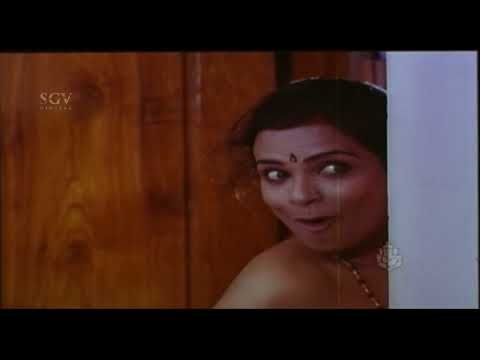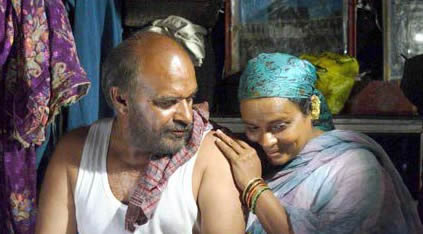The Queen of Gulabi Talkies
Every Sunday at 7pm, the latest Kannada cinema, fresh off the talkies, would play on Doordarshan, after the classical music program. An event my grandfather frowned upon, since such ‘anti-intellectual’ activity would corrupt our moral fibre (which only greatly increased our fascination). Despite his tacit disapproval – stylish ambassador cars screeched in a hot chase, ladies picked up phones and said ‘Hello Operator’ to Rajkumar in bell-bottoms, Rebel Star Ambarish played a pink-suited secret agent. As a 10-year-old, I searched for myself in the leading ladies of these blissful Sunday movies of the late ‘80s and early ‘90s. After an initial burst of promise, all of them annihilated their personhood to become good wives, mothers or sisters. To my utter disappointment, they sacrificed regularly, won over evil mothers-in-law through goodness, were stalked and conquered, and gave birth to baby boys post their ‘first nights’. They upheld every patriarchal definition of womanhood, chastity, and virtue. It was at this time that Umashree burst into my life and I vividly recall the shock of first watching her on screen.
In Ravichandran’s ‘Swabhimaana’ (1985) Vijay falls in love with Vani, during a prize giving ceremony where Vani has won first place in Debate, Sports, Embroidery, Drama, Painting and Drawing. Smitten, Vijay marries Vani, who proceeds to ably manage his estate, accounts and business, alas drawing Vijay’s jealousy. Ignored by the very man she loves, Vani tries to bring a change in him, as Vijay plays squash and rejects her tear-filled appeals. In the same film, Umashree plays the estate maid, with an endearing husband (played by her favourite co-actor NS Rao), who is cursed with impotency, an affliction she is resolved to cure. In her comedy track, Umashree is firmly in charge of making her husband the stallion he is meant to be, blows the pungi to ‘wake his snake’, cooks him meals of sorekai (snake gourd), buys tonics guaranteed to ‘make him a man’. I vividly remember the scene where Umashree stands provocatively at the door of their bedroom, after one such attempt. NS Rao sits coyly on the bed like a bride on her ‘first night’. Umashree, full of desire, wrestles him onto the bed which breaks and as the lights go out, we hear NS Rao giggling, saying ‘spare me, dear lord’.
Although never cast as the lead, Umashree had a monopoly in Kannada cinema since the early 80’s to the late 2000’s. She starred in over 400 films. There was no actress who was even a distant second. In an interview with Suvarna Kannada, she says “I was never the heroine, but for several years, the films ran because the public didn’t ask who the hero or heroine was. They asked, ‘is Umashree in it’”

Image:Umashree ‘controls’ costar Sihi kahi Chandru in film ‘Challenge GopalaKrishna’ (1990)
Umashree’s characters weren’t the cabaret/nautch girl, whose main purpose in the narrative was to take a bullet for the Hero. Nor was she the younger sister whose rape served a plot pivot for the Hero to turn into ruthless avenger. Umashree’s characters knew the negotiation of intimacy, and what she must do to get the best deal. The roles Umashree played were distinct. She was usually single, desirable, surrounded by men, unabashedly aware of her sexuality and the effect it has on those around her. Always occupying the side track, her characters mouthed sharply comic dialogues imbued with double entendre. The characters she portrayed were capable of looking after themselves, freely using their sexuality as a means of negotiating with the world.
The roles Umashree played were beamed into our TV sets, normalizing her distinct brand of comic innuendo, making a place for vulgarity in middle-class homes. Although humbled in the end, unlike the heroines she shared screen time with, Umashree called out the vulgarity of patriarchy by refusing to internalize it. She instead exposed its crudity by externalizing it with skill and honesty that simultaneously made her both ‘cheap’ and immensely successful. At the end of a movie when ‘The Beginning’1 flashes on the screen over picture-perfect domestic bliss, Umashree’s characters would be comically grumbling, winking at a new catch or restarting an old feud with the husband while the heroine makes peace within patriarchy. When Umashree’s films beamed into our homes, I was old enough to understand why my grandmother had taught herself to laugh soundlessly – to never wear all her pearls, since even at 72, her being ‘too attractive’ made my grandfather uncomfortable. Something in Umashree’s bawdy vulgarity felt reassuring. Although unintended by the film makers, her roles were an alternate to the punishing lives of the lead heroines. Maybe no one else saw it that way, but she stood out in my childhood, in a blaze of gaudy blue eye-shadow.

When I encountered Umashree again – it was in a world where I was a theatremaker (a profession that would have horrified my grandfather) researching female performers in the archives of Prakash Garud’s extensive documentation of North Karnataka’s company theatre history. During 1970-90 – a period of decline in Kannada’s illustrious company theatre, as it waged a losing battle with the talkies, a new set of possibilities emerged. Enabled by its low maintenance nature, the frontline comedy took on a new significance. In this format, female roles went through a radical change as the appearance of the ‘loose woman’ as a comic figure started to gain popularity. It was here, at this particular point in history, I found Umashree again. In the late 70’s, with some experience in rural and amateur theatre, Umashree had turned to commercial theatre to support herself as a young single mother. Abandoned by her husband, commercial theatre became her profession.
In Huccheshwara Natya Sangha’s commercial hit ‘Bus Conductor’ (1979-90), Chenni, is a side character, the daughter of a Khanavali owner. With Umashree taking on this role, her popularity as Chenni rose to such an extent that ‘Bus Conductor’ was renamed ‘Khanavali Chenni’. All the characters from the original play were relegated to side characters and ‘Khanavali Chenni’ became the season’s biggest commercial success. With this success Prakash Garud recalls how Umashree would be called by panic-stricken managers when their shows started to lose audiences – a mere mention of Umashree on a company poster would ensure a full house. Around the time of her success as a commercial theatre actress, Umashree made another bold move by starring in Kashinath’s Anubhava (1984), a Kannada adult film. She essayed a role “with grey shades” which no actresses were willing to portray. The film went on to become a blockbuster, catapulting her into talkies-theatre dual stardom.

Umashree, throughout her career, drew inspiration from her folk theatre (Gramya Rangabhoomi) roots and her immersion in professional theatre circuits of North Karnataka. It was from here that she crafted her roles, with an array of authentic accents, costumes and behaviours – from the flower-seller sporting a Chamrajnagar accent to the maid with a North Karnataka twang to the suave college lecturer peppering her dialogues with English phrases of playful admonishment ‘Oh you naughty naughty!’. Through her professional theatre experience, she brought to life characters firmly rooted in the Kannada cultural imagination, a quality that aided her immense popularity as an actress.

The third time I encountered Umashree was in 2010, in a retrospective of auteur Girish Kasarvalli’s films. It was in art house regional cinema, surrounded by khadi sarees and polite conversation I saw her again. The Queen of ‘Gulabi Talkies’, playing a midwife in her 50’s, Umashree made a casting coup, bringing alive a woman whose sexuality was as central as her character. At a time when her contemporaries, made irrelevant by age and lack of roles, were absent from the silver screen, Umashree won her first National Award for Best Actress (2008). A few years after, in 2013 Umashree became Karnataka’s Minister for Kannada and Culture.
By now, I had learnt not to be surprised.
Notes
- Kannada family dramas of the 80s and 90s ended with all the actors gathering while “The Beginning” flashed as a title on the last scene. This was to indicate that life comes to a full circle.
ABOUT THE AUTHOR
Sharanya Ramprakash is a theatre maker whose work experiments with language, tradition and gender. She writes, acts, directs and collaborates with a range of forms, communities and theatre makers across local, national and international locations. Sharanya is an INLAKS scholar and member of Lincoln Centre Director’s Lab, New York. She is one of the founders of theatre collective, Dramanon, Bengaluru which produces new writing and nurtures emerging voices.
Her latest work includes Akshayambara, a critical exploration of gender and masculinity in Yakshagana with a contemporary feminist lens. Mythology Upon the table, that interrogates Homer’s Odyssey, with a queer, feminist, Asian lens directed by Baboo Liao is currently touring Taiwan. Her Kannada play, Nava, created in collaboration with 9 transwomen from Aravani Art project and I am not here – performed as an an 8 step guide on how to censor women’s writing, devised by her and Ronita Mookerjee and directed by Deepika Arwind are also currently in performance.
Header Image:Umashree in Sididedda Gandu (1990) Photocredit Chitraloka

